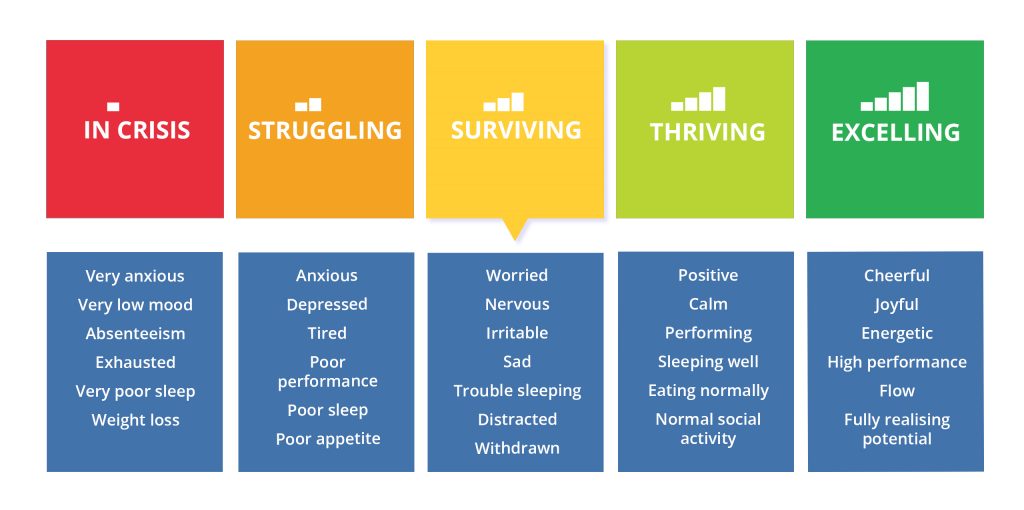The Colours of Mental Health in the Towing Industry and Blue Collar Jobs
Mental health is a crucial factor in the overall well-being of individuals working in the towing industry and other blue-collar jobs. These workers often face demanding physical labor, long hours, and challenging work conditions. It is essential for employers and employees in these industries to understand mental health as a continuum and recognize the signs and symptoms of poor mental health. By addressing mental health in the workplace, companies can create a supportive environment that promotes employee well-being and productivity.
Previously this week we talked about the Buddy Up Program, we heard an amazing story where we heard about the colours of mental health. Let’s get into it!
Mental Health
The Mental Health Continuum in Blue-Collar Jobs: The mental health continuum can be divided into five zones: Excelling, Thriving, Surviving, Struggling, and In Crisis. Understanding these zones can help employers and employees identify their current mental state and take appropriate action to maintain or improve mental well-being.
- Excelling: In the towing industry, employees who are excelling are functioning at their peak level. They may be highly motivated, engaged in their work, and enjoying personal successes. Employers can support employees in reaching this state by providing opportunities for growth and promoting a positive work environment.
- Thriving: Employees in the thriving zone are in a healthy mental state. They may face daily challenges but are generally coping well and maintaining a balance between work and personal life. Employers can support workers in this zone by offering flexible work schedules, maintaining open communication, and providing access to resources for stress management.
- Surviving: Employees in the surviving zone may be experiencing increased stress, difficulty concentrating, or changes in sleep and appetite. In the towing industry, this could be due to long hours, heavy workloads, or challenging work conditions. Employers should monitor employees for signs of increased stress and provide support, such as adjusting workloads or offering stress management resources.
- Struggling: Workers in the struggling zone may have difficulty performing their duties and may exhibit signs of anxiety or depression. Employers should be proactive in identifying these employees and offering support, such as connecting them with Employee Assistance Programs (EAPs) or mental health professionals.
- In Crisis: In this zone, employees may be experiencing severe mental health issues and may require immediate assistance. Employers should have protocols in place to respond to employees in crisis, including providing access to mental health services and supporting time off for recovery.
- Resilient: Employees in the Resilient zone have faced challenges or setbacks but have developed effective coping strategies to manage them. They are not only managing well but have learned and grown from their experiences. In the towing industry, for instance, these employees may have faced difficult or traumatic events but have the tools and support systems to maintain their well-being.
Supporting Mental Health in the Towing Industry and Blue-Collar Jobs: To promote mental health in the towing industry and other blue-collar jobs, employers should:
- Encourage open communication about mental health and work to destigmatize mental health issues.
- Train managers to recognize the signs of poor mental health and provide appropriate support.
- Offer access to mental health resources, such as EAPs or counseling services.
- Prioritize work-life balance by offering flexible work schedules and promoting a healthy work environment.
- Implement mental health policies and procedures to ensure employees receive the support they need.
Conclusion: Mental health is an essential aspect of overall well-being for employees in the towing industry and blue-collar jobs. By understanding the mental health continuum and implementing strategies to support mental well-being, employers can create a positive work environment that benefits both employees and the organization as a whole.
To learn more about the colours of mental health in a more in depth look, check out Mental Health Continuum article.

